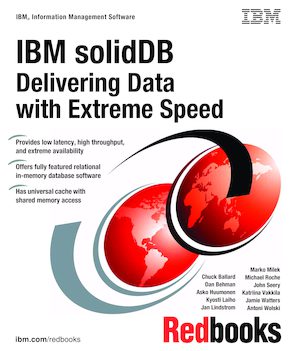Abstract
The world seems to be getting smaller and business moving much faster. To be successful in this type of environment you need instantaneous access to any information, immediate responses to queries, and constant availability, on a worldwide basis, and in a world where the volume of data is growing exponentially.
You need the best resources you can get, and ones that can satisfy those needs. IBM® can help.
A primary component that can affect performance is access to disk-based data. And, as data volumes grow, so does the performance impact. To improve performance, it is time to look for technology enhancements that can mitigate that impact.
IBM solidDB® is powerful relational, in-memory caching software that can accelerate traditional disk-based relational database servers by caching performance-critical data into one or more solidDB in-memory database instances. This capability can enable significant performance improvements.
It brings data closer to the application so you can use a faster and more efficient data access paradigm. The result? Faster delivery of information for your queries to enable faster analysis and decision-making that can give you a significant business advantage.
Have questions? Many of the answers you need are contained in this IBM Redbooks® publication.
Table of Contents
Chapter 1. Introduction
Chapter 2. IBM solidDB details
Chapter 3. IBM solidDB Universal Cache details
Chapter 4. Deploying solidDB and Universal Cache
Chapter 5. IBM solidDB high availability
Chapter 6. Performance and troubleshooting
Chapter 7. Putting solidDB and the Universal Cache to good use
Chapter 8. Conclusion
